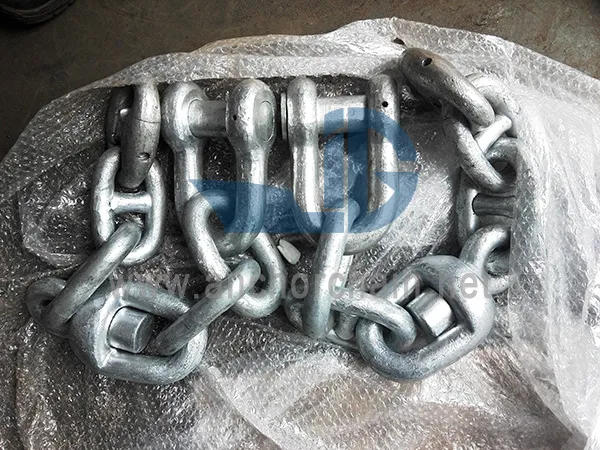How to maintain anchor chain
2024-11-07
Maintaining an anchor chain is essential to ensure it remains reliable, corrosion-resistant, and ready for safe anchoring in all conditions. Regular inspection and maintenance of the anchor chain help prolong its lifespan and prevent failures at sea. Here are some key steps to maintain an anchor chain effectively:

1. Regular Inspection
- Frequency: Inspect the anchor chain every few months, or more often if the boat is frequently in use.
- Check for Wear and Damage: Look for signs of wear, such as flattened or thinning links, corrosion, pitting, and cracks. Pay extra attention to the links closest to the anchor and windlass, as these areas experience the most strain.
- Inspect Shackles and Pins: Shackles and connecting pins are critical points and should be checked for tightness, wear, and corrosion. Loose or damaged pins should be replaced immediately.
2. Cleaning the Chain
- Freshwater Rinse: Rinse the chain with freshwater after each use, especially if it's been in saltwater. Salt can corrode the chain over time, so removing it helps prevent damage.
- Soak for Deeper Cleaning: Periodically soak the chain in a solution of water and mild soap or a marine-grade cleaner to remove built-up grime, salt, and contaminants.
- Rust Removal: For mild rust, scrub the affected areas with a wire brush or sandpaper. For heavier corrosion, consider using a rust remover specifically designed for marine-grade metals.
3. Protect Against Corrosion
- Galvanizing: If your chain is galvanized, inspect the coating regularly. Chains that are heavily used or stored in harsh conditions may need re-galvanizing after a few years to maintain corrosion resistance.
- Rust Inhibitors: Apply a marine-grade rust inhibitor to the chain, especially if it is made of stainless steel or uncoated metal. These inhibitors create a protective layer to help prevent rust.
4. Lubrication
- Use Marine-Grade Lubricants: Apply a light coat of marine-grade lubricant to the links and swivels periodically to prevent rust and ease movement. This helps reduce friction and wear on the chain links.
- Avoid Greasy or Sticky Lubricants: Use a lubricant that doesn’t attract dirt and debris. Sticky lubricants can trap contaminants that may cause abrasion and accelerate wear.
5. Windlass Maintenance
- Check Alignment: Ensure the chain is properly aligned with the windlass gypsy. Misalignment can cause the chain to bind or wear unevenly.
- Inspect Windlass Components: Regularly inspect the windlass gypsy, clutch, and brake for signs of wear or malfunction. Lubricate moving parts according to the manufacturer’s recommendations.
6. Storage
- Keep the Chain Dry: When the chain is not in use, ensure it is dry. If stored in a chain locker, ensure the locker has good drainage and ventilation to prevent moisture buildup.
- Prevent Tangling: Store the chain in a way that prevents tangling and kinks, as these can weaken the links over time. Coil it neatly and avoid stacking heavy objects on top of it.
7. Replace Worn Links
- Timely Replacement: If any links show excessive wear, thinning, or cracking, replace them immediately to avoid compromising the entire chain’s strength.
- Professional Assessment: For large vessels or if unsure about a link’s integrity, have a marine technician or professional assess the chain.
8. Paint for Visual Wear Markers
- Paint Intervals: Paint sections of the chain at intervals (e.g., every 10 feet) to mark its length. This helps monitor wear over time and easily track how much chain has been deployed.
- Reapply Paint as Needed: The paint may wear off with repeated use, so reapply it as necessary.
9. Avoid Excessive Shock Loads
- Shock Absorbers: Consider adding a snubber or other shock-absorbing device to reduce strain on the anchor chain, especially in rough seas or high winds.
- Proper Deployment and Retrieval: When anchoring, avoid dropping or dragging the chain harshly, as this can cause excessive wear on the links.
Summary
Maintaining an anchor chain involves regular inspection, cleaning, lubrication, and careful storage to prevent wear and corrosion. Regular care not only helps keep the chain reliable and safe but also extends its lifespan, ensuring it remains a dependable part of your anchoring system.


